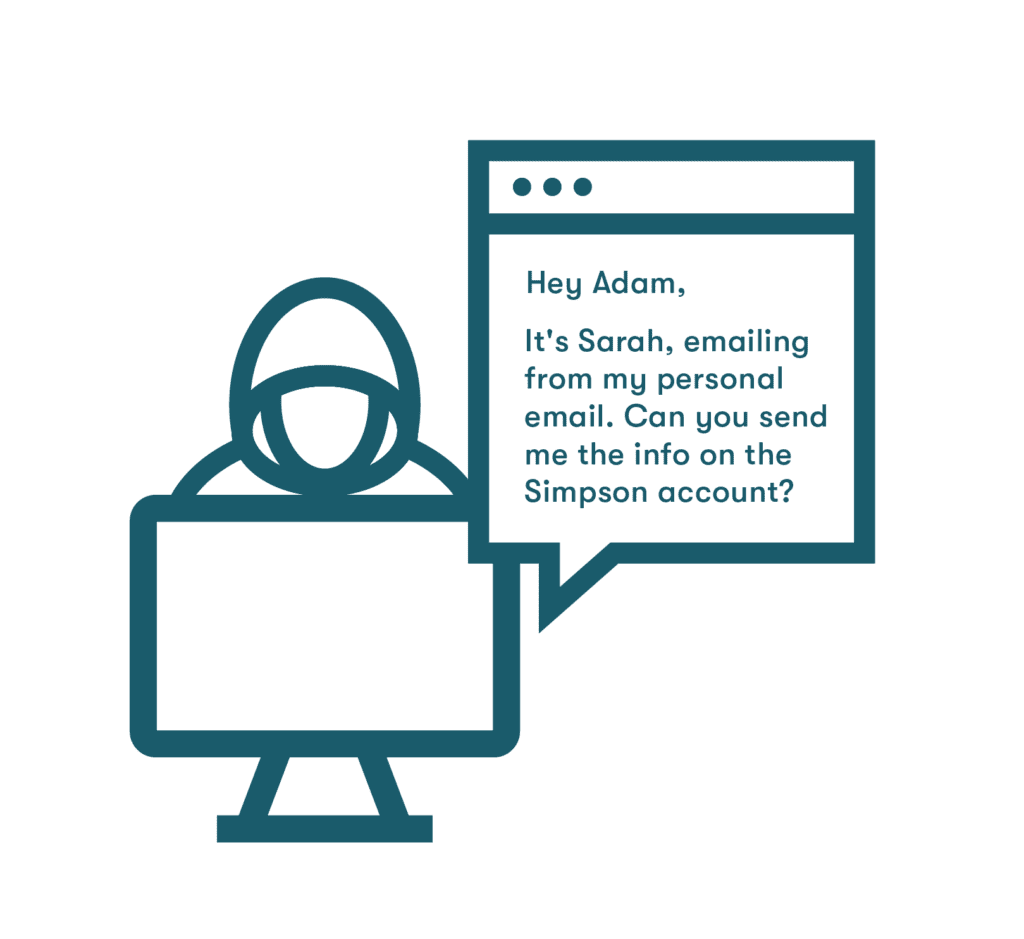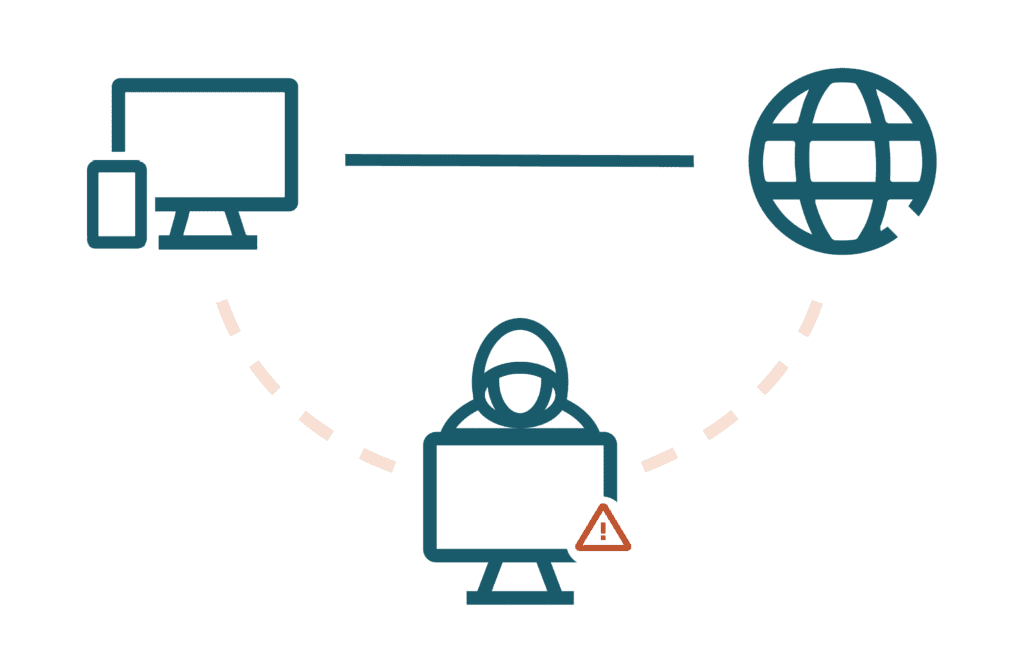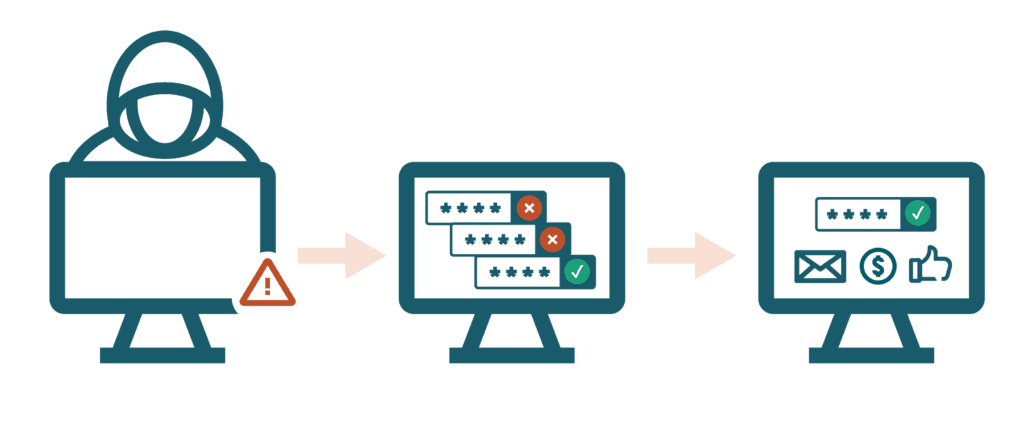Do You Know the Likelihood of a Cyberattack on Your Company?
The rise in cyberattacks has been exponential over the past decade. Fortunately, following cybersecurity best practices can help reduce the likelihood of a cyberattack on your company while avoiding an average of $2.6 million in data breach costs.
What is a cyberattack?
A cyberattack is any unauthorized, malicious activity targeted at a device or network. The objective could be to access, modify, or steal data; to block access to data; or to fraudulently transfer information with the intent of misusing or selling it, among others.
The activity of getting in with the intent to harm is a cyberattack event, regardless of the objective and result. Therefore, the simplest way to safeguard your systems is to prevent attackers from getting in.
Want to learn more about using a password manager for your business?
Check out Dashlane's password manager for small businesses or get started with a free business trial.
What's the likelihood of a cyberattack on your company?
Regardless of size and business sector, recent cyberattacks prove that no organization is immune to cyber intrusions.
- No business is too small. In 2021, one in five data breach attacks targeted small and medium-sized businesses. Further, small businesses face 350% more social engineering attacks than large organizations. The numbers prove that small businesses need a strong password management strategy.
- Cyberattacks occur every minute. In fact, a new cyberattack is launched every 39 seconds. Does that mean someone’s data is being exposed every 39 seconds? Not quite—being attacked isn’t the same as being compromised. Organizations can significantly reduce the risk of exposure with cybersecurity best practices.
- Cyber threats never take a break. Unfortunately, history has taught us that crime never stops. Cybercrimes increased by 600% during the pandemic as cybercriminals took advantage of distracted users and an unplanned global shift to remote work.
- It can happen more than once. In an IBM study, 83% of organizations faced more than one breach.
- A breach can lead to significant losses, especially if you’re a small enterprise. Nearly two-thirds of small businesses fail to continue their operations after being hit by a cyberattack. Regardless of your organization’s size, a cyberattack can prove very costly. In 2022, the average cost of a data breach in the United States was $9.44 million.
If you think your business may have been breached, run a free vulnerability report to discover if your business email has been affected.
The different types of cyberattacks
If you’re looking for ways to minimize the risk of cyberattacks, you first need to understand what you’re up against. The most common types of business cyberattacks are briefly explained below.
Malware
If you’ve heard terms like trojan, ransomware, loss of control, or computer hijacking, you’ve heard of malware. Malware is short for “malicious software;” that bad actors force you to inadvertently download or open (a harmful element such as a file, link, script, or image, for example). When you trigger the element, hackers can access your computer’s data, potentially gaining control over the system.
Phishing
Phishing is when someone defrauds a person into sharing confidential information. This could be sending an email that appears to be from a reputable company or calling employees and posing as internal IT staff to ask for private details such as passwords or payment methods. Once they have the credentials, they can plant malware, steal your organization’s data for misuse, or sell sensitive information on the dark web.

Man-in-the-middle attacks
As the term suggests, man-in-the-middle attacks occur when a third party intercepts data that is being sent or received through the network. Employees accessing company networks and work profiles through public WiFi are particularly prone to these attacks.

Denial of service (DOS) attacks
Picture a traffic jam on your system servers. This is precisely what Denial of Service attacks lead to. Denial of Service (DOS) attacks send fake requests and user traffic to the servers to clog and overwhelm them. This could significantly impact business operations because the bottleneck created by fake requests causes a slowdown that limits real traffic from getting access to servers on time. Sometimes, the overload may also cause a system outage and subsequent downtime.
Brute force attacks
Brute force attacks happen when hackers create tools that try out different combinations of user credentials until one finally matches. Then, they may try the same password on that same user’s accounts to check if that person has reused that password.

SQL injection
SQL stands for structured query language—a programming language used to manipulate data in relational databases. Organizations commonly use it to store and process confidential data. SQL injections are malicious snippets of code sent to the database in an attempt to trick it into returning confidential data.
Zero-day attacks
Zero-day attacks take advantage of vulnerabilities that have existed since the release or launch of a product or software. These vulnerabilities are exploited to steal data, wrongfully access the system, and cause damage and chaos. The organization has zero days to fix the vulnerability because it’s exploited before anyone’s aware of it. Zero-day attacks are another reason why keeping your apps and software updated is so critical.
Dead man’s switch
The term dead man’s switch has traditionally been used to refer to any trigger that leads to an action in the event that the human operator becomes incapacitated. This backup plan helps to avoid losing access to critical files, but interestingly, it can be used against you if the implementer is a cybercriminal. Hackers can set traps on your system, such as stealing data and triggering the installation of malware if you fail to meet certain conditions.
Alternatively, hackers who expect they may get arrested could use this method as an insurance policy to delete all evidence. They might set up an action they must complete online, which wouldn’t be possible after their arrest. Failure to do so would automatically delete all evidence and data they possess.
Risks to businesses posed by cyberattacks
Why should you prevent cyberattacks? To protect your organization, business partners, and customers from monetary and reputational losses. The three major risks to businesses are:
Monetary and asset losses
Cyberattacks may lead to ransomware, forcing you to pay millions of dollars to regain access. Financial leaks may also lead to money being taken from business or personal accounts. Your company assets, such as patent and copyright information, confidential files, and system data, can also be stolen. Further, repairing damages—rebuilding public image, reestablishing operations, attorney and legal fees, and so on—is expensive and time-consuming.
Reputational damage
It takes years to build a brand, but only minutes to lose it all. Public perception is a key element for all businesses and many individuals—whether it’s maintaining a good public image, keeping the trust of your sponsors and stakeholders, or even maintaining your relationships with vendors and third parties; a data breach could significantly impact all of these. Here are some of the most notable breaches in 2023 and how the attacks might have affected these brands’ customers and clients.
“Our strongest tools are our reputation and relationships. A breach could do more than take our security; it could remove the trust from our name that we’ve worked so hard to build. Dashlane is not just securing passwords; it’s helping us secure our relationships.”
Principal, Vice President at JD+A
Regulatory scrutiny and fines
Data security is an important part of running a business, and a data breach may indicate your inability to do so. This can make you vulnerable to regulatory audits of your processes and fines for your organization’s inability to properly handle the data. For example, GDPR fines can reach $21 million or up to 4% of annual revenue.
5 ways to minimize the risk of cyberattacks on your company
Given that every company has at least some likelihood of a cyberattack, it’s important to take action to reduce that risk:
- Foster a culture of security
Involve everyone from CEOs to that new employee you hired last week. With the right communication, your employees will understand the roles they can play—from securely managing passwords to best practices to safeguard against phishing. Create a robust security culture to educate and empower your employees to think and ask the right questions relating to cybersecurity.
- Create strong password policies
Unfortunately, using default passwords is one of the common reasons for data leaks. Eighty percent of cyberattacks are caused by weak or reused employee passwords. Passwords that are easy to remember are often just as easy to crack. Organizations need clear password policies to ensure employees have strong passwords stored appropriately, share passwords securely when necessary, and follow proper onboarding and offboarding protocols.
- Add an incident response plan to your cybersecurity policy
An incident response plan details the actions that an organization will take in the event of a data breach. From communication with the media to securing uncompromised software, the plan lists all actions that must be taken along with their respective owners. Organizations with an incident response (IR) team that regularly tested their IR plan saw an average of $2.66 million lower breach costs than organizations without an IR team.
- Use the right tools and secure your systems
Given the monetary, legal, and reputational implications of data breaches, using reliable tools is critical. Tools such as a password manager and multifactor authentication can set you apart from vulnerable organizations.
Here’s a list of security tools to strengthen the security infrastructure of your organization:
- VPN: A trusted virtual private network (VPN) creates a safe browsing environment.
- Single sign-on: With single sign-on (SSO), you get the best of both worlds–easy and secure logins.
- 2-factor authentication (2FA): 2-factor authentication adds an extra layer of security to a password-based login process.
- Autofill: Autofill helps users securely sign in with complex passwords without the hassle of remembering them.
- Password manager: An all-in-one password manager like Dashlane enables employees and IT departments to access, share, and manage passwords securely across multiple devices and platforms.
Additionally, regularly performing security checks on your cloud-based SaaS providers is just as vital. According to an IBM Data Breach Report, 45% of data breaches are cloud-based, so cloud security can be a smart preventative measure.
- Purchase cybersecurity insurance
Despite your best efforts, your organization may become a victim of cyberattacks. In that case, cyber insurance can significantly reduce financial harm.
If you’re prepared, your incident response (IR) plan will help save your reputation and limit any further damage. Your pre-planning could also be evidence that assures regulatory bodies and customers of your efforts. The one unavoidable outcome is the monetary damage, which would lead to a drop in existing funds and could affect routine operations. Cyber insurance can help your organization stay afloat by covering monetary losses and expenses for legal counsel, data recovery, software repair, customer notifications, and other items.
How Dashlane helps protect against cyberattacks
Dashlane provides end-to-end password and data security that can aid into help preventing cyberattacks for your organization. From safeguarding passwords with bank-grade encryption, 2-factor authentication, and secure password sharing to improving employee password hygiene with Password Health scores and monitoring the dark web for security breaches, Dashlane covers all your security requirements.
Learn from our CTO, Frederic Rivain, about how Dashlane protects your data.
References
- CISA, ”2021 Trends Show Increased Globalized Threat of Ransomware | CISA,” February 2022.
- PURPLESEC, “Recent Cyber Attacks & Data Breaches In 2023.”
- Dashlane, ”Recent Wave of Cyberattacks Proves No Industry Immune,” June 2021.
- Dashlane, ”Do You Have These 6 Cybersecurity Basics Down?” June 2022.
- Dashlane, “What the Hack Is a Brute Force Attack? - Dashlane Blog,” February 2020.
- Dashlane, ”Why You Need to Have Secure Passwords in 2023,” February 2023.
- Cisco, ”Cyber Attack - What Are Common Cyberthreats?”
- UpGuard, ”Why is Cybersecurity Important?” October 2022.
- Forbes, ”Alarming Cyber Statistics For Mid-Year 2022 That You Need To Know,” June 2022.
- UpGuard, ”The 68 Biggest Data Breaches (Updated for November 2022),” December 2022.
- Dashlane, “What the Hack Is Phishing?” March 2020.
- Dashlane, “The Most Notable Breaches That Kicked Off 2023,” February 2023.
- Dashlane, “Why You Should Keep Your Apps Updated,” March 2022.
Sign up to receive news and updates about Dashlane
Thanks! You're subscribed. Be on the lookout for updates straight to your inbox.
